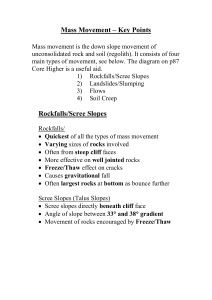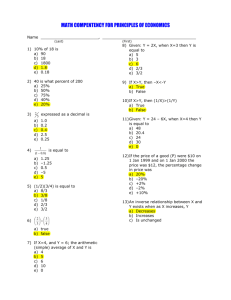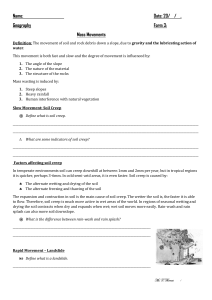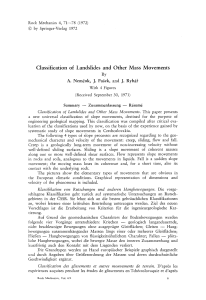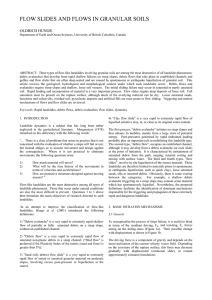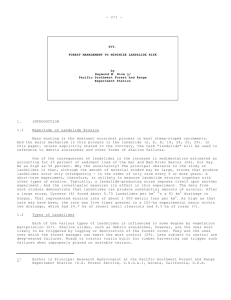Mass Movement
advertisement
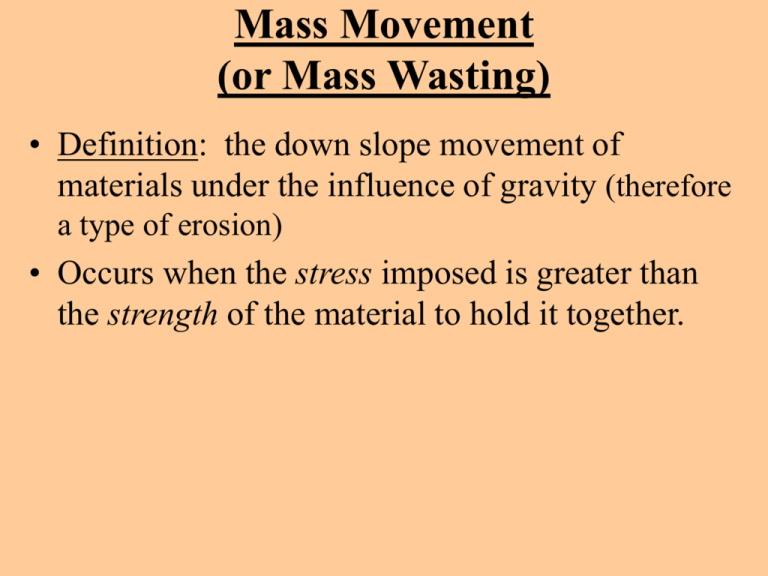
Mass Movement (or Mass Wasting) • Definition: the down slope movement of materials under the influence of gravity (therefore a type of erosion) • Occurs when the stress imposed is greater than the strength of the material to hold it together. Mass Movement • Water affects mass movement by not only increasing mass, but also decreasing viscosity. • Movement occurs at specific often well-defined planes. (usually between regolith and bedrock) • This does NOT always mean landslides. It also includes such processes as creep, slumps, mudflow, and rock fall,. Soil Creep • Very slow (imperceptible) movement of the top layer of soil. • Generally occurs due to expansion and contraction of the soil. – Expansion pushes particles perpendicular to the surface. When it contracts, gravity pulls the particles straight down, resulting in slight downward motion. Slumps • Blocks of land, usually on curving slopes, can fracture from the surrounding terrain and move downhill. (note: all one part) • Often results when land at the bottom of the slope is removed, therefore it can’t support soil at the top of the slope. • May move very slowly (m/s), moderately (m/yr), or quickly (ie. during earthquakes) Rock Falls • Chunks of rocks near the top of a cliff or slope detach and fall to the base of the slope. Mudflows • Mud is essentially water that is full of suspended small rocky particles (clay and silt). • When an sloped area that is normally dry experiences large rainfall, the ground is not equipped to drain the vast quantities of water. The area becomes muddy, heavy, and can slide down the slope. • The force of the mud, much like a tidal wave, can carry away even large rocks and trees. • How do all of these differ from landslides? – Landslides involve relatively quick movement of unconsolidated material (not packed together). – Mudflows… • are also unconsolidated, but involve mud (imagine that!) – Slumps… • move as one unit. – Rockslides • involve consolidated material rocks – Soil creep • is very slow (imperceptible) • HW: Read section 12.3 (again, take notes) • Do #2, 4 p. 270



